In 1908, John Moses Browning designed a cartridge he called the 380 Automatic Colt Pistol, but which we know today as the 380 ACP. The Germans called the cartridge the 9mm Kurz, with the Italian name for the same round being the 9mm Corto. Both of those foreign words mean short, with the 380’s metric nomenclature being 9x17mm, compared to the 9x19mm sizing of the 9mm Luger (or 9mm Parabellum).
Once snubbed for being underpowered, at least in the American market, modern bullet technology has granted new life to the 380 ACP. As a result, we have recently witnessed several manufacturers introducing new 380 ACP pistols. We grabbed two of the newest models as well as a classic piece against which we can measure the latest handguns.
The first is the Ruger Security 380 Lite Rack 03839, $296. It shoehorns 10- or 15-round magazines into a lightweight package, along with the Lite Rack system and some great sights.
The second is the Smith & Wesson M&P 380 Shield EZ 3008882, $400. Also designed to be easy to rack for those with diminished hand strength, the Shield EZ includes a grip safety hinged at the bottom and many of the features found on the very popular M&P 9mm series.
The classic entry in our test is a kindly used Beretta Model 84BP, $400. Essentially a scaled-down version of the Beretta Model 92 9mm Luger, this particular Model 84 allows the pistol to be carried hammer down where it can be shot as a true double action. Or it can be carried cocked and locked for single-action operation.
Our test shooters fired this trio side by side at American Shooting Centers in Houston. For accuracy comparisons, we shot at 15 yards with Hornady Critical Defense FTX 90-grain rounds, 90-grain Federal Personal Defense Hydra-Shoks, Black Hills 90-grain JHPs, and Armscor 95-grain FMJs. Additionally, we fired speed drills at 5 and 8 yards. Here’s what we found:
Ruger Security 380 Lite Rack 03839 380 ACP
$296
Gun Tests grade: B [best buy]
Inexpensive and light recoiling, with sights that are very easy to see.
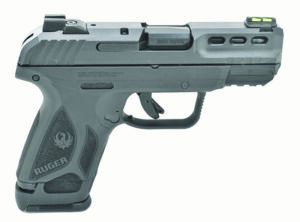
| Action Type | Semi-auto, hammer fired |
| Overall Length | 6.5 in. |
| Overall Height | 4.3 in. |
| Maximum Width | 1.3 in. |
| Weight Unloaded | 1.07 lbs. |
| Weight Loaded | 1.3 lbs. |
| Slide Material | Alloy steel |
| Slide Retraction Effort | 10.6 lbs. |
| Receiver Material | Glass-filled nylon |
| Finish | Black oxide |
| Front Strap Height | 1.75 in. |
| Back Strap Height | 2.75 in. |
| Barrel Length | 3.42 in. |
| Grip Thickness (Maximum) | 1.17 in. |
| Grip Circumference | 5.3 in. |
| Magazines | One 15-round, one 10-round |
| Rear Sight | Drift adjustable, black |
| Front Sight | Drift adjustable, green fiber optic |
| Sight Radius | 4.8 in. |
| Trigger Pull Weight | 4.3 lbs. |
| Trigger Span | 2.9 in. |
| Safety | Thumb |
| Warranty | None written |
| Telephone | (336) 949-5200 |
| Website | Ruger.com |
| Made In | U.S. |
KelTec may well have created the lightweight 380 market with the introduction of the P3AT in 2003. Even so, Ruger still gets the credit for starting the stampede to pocket 380s. Ruger introduced the LCP (Lightweight Compact Pistol) in 2008, effectively creating a whole new genre of defensive pistols. The LCPs are light (slightly more than 8 ounces) and flat, making them easy to conceal. Demand was beyond all projections, and availability was sketchy for years. On the minus side, small may be easy to conceal, but it is also difficult to shoot well. Sights on the initial models are vestigial at best, and recoil is brisk, even chambered in 380 ACP. These aren’t exactly target pistols either. One LEO instructor we know describes them as “get off me guns” to be fired at contact distances.
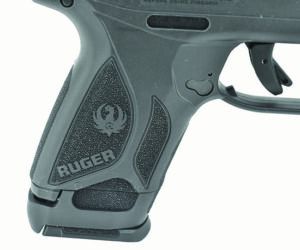
Then there is that caliber thing. Europeans seem to like small-caliber pistols. One of our test team members owns an FN Model 1922 in 32 ACP with markings for the German Railroad Police. Americans tend to like their pistols with a bit more oomph. The 380 ACP may have done well across the pond, but it was always a sub-class round here. At least until all the demand for pocket guns took off, making the ammunition companies sit back and take notice. The ammo makers used the same design changes instigated by the deficiencies noted in the FBI Miami shoot-out to make improvements in the current crop of 380 ammo. The result has been a cartridge that will never have the knockdown power of a 45 ACP or even a 9mm Luger, but one that can perform at a level JMB never dreamed of.
With better ammo, SIG Sauer, Smith & Wesson, and many others jumped on the 380 bandwagon. The resulting guns were still lightweight, easy to conceal and carry, but they didn’t have much ammo on board, and they still weren’t much fun to shoot. It dawned on some bright product development manager somewhere that there was a simple solution to both problems — make the pistols bigger, but only to the extent they were still concealable.
Ruger persevered in the development process with the introductions of the LCP II, LCP Max, and LC 380. Sights, magazine capacities, and triggers were improved incrementally, and the 380 lines continued to perform well. Our Security 380 is the latest and greatest from Ruger, and we like some of the things we see.
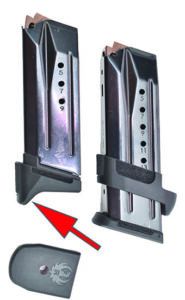
First is the size of the pistol. We don’t consider any of the pistols in this test to be full size, but they are considerably larger than their pocket-size predecessors. The larger size creates a more hand-filling grip. More pistol to hold onto makes the pistol much easier to control than their pocket-sized cousins. We also understand that might make more difference to some folks than others. This test group has a couple of members in their sixties. Their hands aren’t as strong as they once were. The reduced recoil of the 380 ACP versus a 9mm Luger is much easier on the hands, but not if you are shooting an 8-ounce pistol.
The mid-size 380 platform provides a second means of reducing recoil. Most of the existing 380 ACP pistols utilize a straight blowback action. In contrast to, say, a 1911, which uses mechanical linkages to keep everything locked up until peak pressure has passed. In the case of a blowback action, slide mass and spring pressure keep the chamber sealed until pressures are safe. The same spring tension that keeps the slide locked must first be overcome by hand pressure before the slide can be cycled or a round chambered.
The type of action is simple and relatively inexpensive but, once again, requires more muscle, which is something many are trying to avoid with the choice of this cartridge. The heavier slides on these mid-size 380s have enough mass to make the action work correctly, which means the springs don’t have to be as heavy. Another win for these medium-sized pistols. Ruger recognizes the advantages of the system and named their pistol the Security 380 Lite Rack. Our sample required less than 11 pounds of pressure to cycle the slide, in contrast to between 15 and 16 pounds necessary for some full-sized 9mms we recently tested.
The Ruger Security 380 is about 6.5 inches long and comes with a barrel not quite 3.5 inches in length. The height of the grip frame is not quite what we would expect, with a frontstrap measuring a mere 1.75 inches, and that is with the 10-round flush-fit magazine seated. Within reason, of course, the barrel/slide length is not hugely important in factoring how “concealable” a handgun is, but grip length absolutely is. The shorter grip frame on the Ruger should make it very easy to conceal in a belt or IWB holster. Want something a bit more hand-filling? No problem. The Security 380 also ships with an extended basepad for the 10-rounder as well as a 15-round magazine, which is sleeved to continue the frontstrap of the pistol.
The slide is grooved at the rear to create traction for the hand and provides small grooves just back of the muzzle to help with press checks. The front of the slide also has lightening cuts to make sure the slide is heavy enough, but not too heavy, which would make the pistol recoil more.
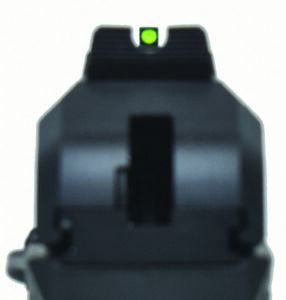
The front sight is drift adjustable and shows a good green-fiber-optic tube. Unlike many other fiber-optic sights we see, the breach end of the sight is totally enclosed in the sight frame. It even has a serrated face on the front sight. There is only room for four grooves, but they did their job to cut down on glare. The rear sight is also drift adjustable and has a black serrated blade and a deep U notch. The rear sight even has the shelf necessary and popular for tactical reloads. The rear of the slide has a slot that makes it easy to see the operation of the well-protected hammer. That’s right — none of the pistols in this group are striker fired.
The frame also brought several advantages over Ruger’s smaller 380s. Made of glass-filled nylon, Ruger included good texturing on all sides of the grip frame. We seem to have played the three bears thing for quite some time, with texturing being too slick or too abrasive. We’re going to call the Ruger just right. There is enough texture to hold onto without destroying your skin. The top of the backstrap ends in a small beavertail that protected the hand and was easy to shoot. Sorry southpaws, the controls are left side only. The magazine release and the slide stop were easy to activate, but we don’t care for the thumb safety. It pivots at the front instead of the rear, making it difficult to engage with our strong-side thumb. We just couldn’t quite seem to reach it with the first knuckle of our thumb, thus requiring us to shift our grip and push up with the tip of our thumb. Not a deal breaker at all, just different.
There is a three-slot Picatinny rail near the muzzle, great for lights and lasers. The trigger has a safety blade within the shoe, a la Glock, but this one depresses fully, thus improving comfort. The tip of the trigger, however, was pointy, and we could feel that by the end of the shooting session. Required trigger compression was a very nice 4.3 pounds on our Lyman Digital Scale. The extractor is an external unit. The barrel hood has a small notch cut in it that can be used to visually confirm chamber status. Disassembly is a snap. Just line up the notch in the lower edge of the slide with the takedown pin. Use a non-marring tool to pull out the pin and ease the slide forward and off the frame.
Our Team Said: The Security 380 was indeed easy to rack, requiring less than 11 pounds of pressure to operate. Recoil was smooth and, very subjectively, the lightest of the three pistols tested here. Sights were easy to see and fast to pick up. As expected, that forward-hinged thumb safety was a bit more difficult to use than the 1911-style units to which we are accustomed, contributing to the slowest average times in the speed drills. It shot best with the Hornady Critical Defense ammo, with groups averaging under 2 inches. The Armscor ammo created a few problems in not wanting to go into battery, not only with the Ruger, but the others as well. Visual inspection shows that there is a serious taper crimp on that ammo that caught just a little when we cycled the action by hand. There were no malfunctions as the Security 380 was being fired.
| 380 ACP RANGE DATA | |||
| Hornady 90-grain FTX | Beretta Model 84 | Ruger Security 380 | Smith & Wesson Shield EZ |
| Average Velocity | 978 fps | 912 fps | 955 fps |
| Muzzle Energy | 191 ft.-lbs. | 166 ft.-lbs. | 182 ft.-lbs. |
| Best Group | 2.07 in. | 1.59 in. | 1.98 in. |
| Average Group | 2.39 in. | 1.91 in. | 2.30 in. |
| Federal Personal Defense 90-grain Hydra-Shok JHP | Beretta Model 84 | Ruger Security 380 | Smith & Wesson Shield EZ |
| Average Velocity | 1012 fps | 959 fps | 963 fps |
| Muzzle Energy | 205 ft.-lbs. | 180 ft.-lbs. | 185 ft.-lbs. |
| Best Group | 1.60 in. | 1.74 in. | 2.74 in. |
| Average Group | 1.95 in. | 2.30 in. | 2.81 in. |
| Black Hills 90-grain JHP | Beretta Model 84 | Ruger Security 380 | Smith & Wesson Shield EZ |
| Average Velocity | 952 fps | 912 fps | 945 fps |
| Muzzle Energy | 181 ft.-lbs. | 166 ft.-lbs. | 179 ft.-lbs. |
| Best Group | 1.49 in. | 2.26 in. | 1.85 in. |
| Average Group | 1.69 in. | 2.41 in. | 2.05 in. |
| Armscor 95-grain FMJ | Beretta Model 84 | Ruger Security 380 | Smith & Wesson Shield EZ |
| Average Velocity | 992 fps | 975 fps | 996 fps |
| Muzzle Energy | 208 ft.-lbs. | 190 ft.-lbs. | 209 ft.-lbs. |
| Best Group | 1.55 in. | 1.98 in. | 1.65 in. |
| Average Group | 2.12 in. | 2.73 in. | 1.97 in. |
How we tested: We fired these pistols at American Shooting Centers in West Houston. Accuracy was tested at 15 yards by shooting multiple five-shot groups from a well-sandbagged Caldwell Pistolero shooting rest (MidwayUSA.com Product No. 517357, $28) assisted by a Mini DRC Fortune Cookie from Wiebad.com ($75, Product No. MINIFC). We found our ammo through Ammoseek.com, firing Hornady Critical Defense FTX 90-grain rounds, Federal Personal Defense 90-grain Hydra-Shoks, Black Hills 90-grain JHPs, and Armscor 95-grain FMJs.
| DRILL NO. 1 DATA | |
| Pistol | Single Shot Average Time |
| Beretta 84 | 0.86 |
| Ruger Security 380 | 0.92 |
| S&W Shield EZ | 0.78 |
Process: Fire one shot from low ready at A Zone target (5 by 11 inches) placed at 5 yards. Numbers are averages for eight repetitions. Times are in seconds.
| DRILL NO. 2 DATA | |||
| Pistol | 1st Shot | Split Average | Total Time |
| Beretta 84 | 1.1 | 0.326 | 1.73 |
| Ruger Security 380 | 1.08 | 0.364 | 1.81 |
| S&W Shield EZ | 1.09 | 0.268 | 1.59 |
Process: Fire three shots from low ready at A Zone target (5 by 11 inches) placed at 8 yards. Numbers are averages for three repetitions. Times are in seconds.
Written and photographed by Joe Woolley, using evaluations from Gun Tests Team members. GT


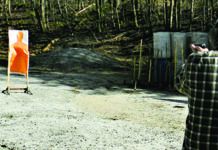
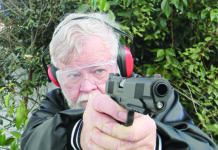
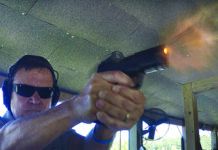
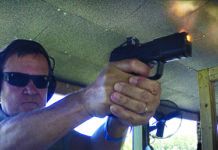
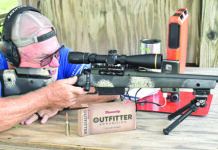
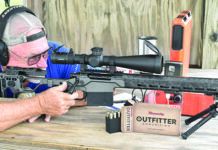

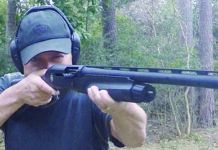
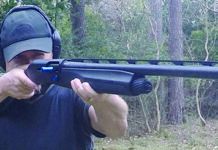
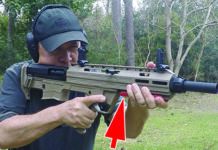



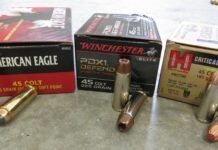
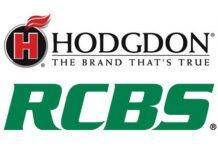
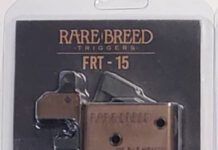
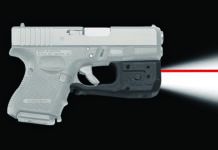
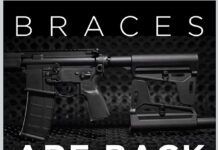






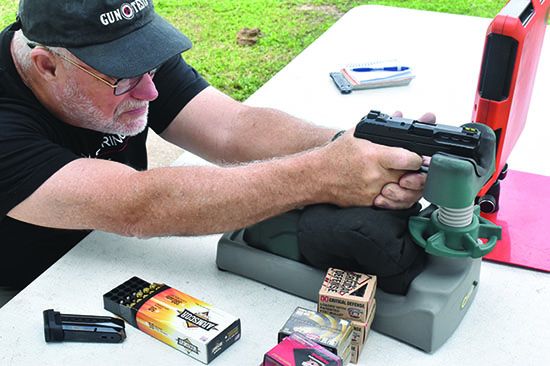

What gives? The Ruger manual says “Action: The strong locked breech action of the RUGER® SECURITY-380® pistol utilizes a tilting barrel design in which the barrel and slide are locked
together at the moment of firing.” It is the locked breech design which allows the use of a softer recoil spring than in a blowback action.
Nice catch 👍🏻
In my opinion the trigger on the Ruger .380 security needs to be longer. There is a large gap between the trigger guard and the trigger. You also noticed this. It might be pointy but the gap will also induce finger pain. My S&W .380 has a much more friendly trigger. No pain!